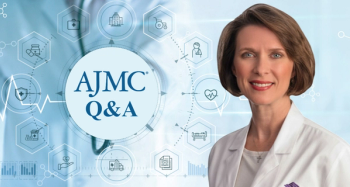
Dr Bruce Feinberg Discusses Speculation of the End of Chemotherapy in Cancer
There has been much speculation about the end of chemotherapy in cancer treatment, but it’s not clear how accurate that is, said Bruce Feinberg, DO, vice president and chief medical officer of Cardinal Health Specialty Solutions.
There has been much speculation about the end of chemotherapy in cancer treatment, but it’s not clear how accurate that is, said Bruce Feinberg, DO, vice president and chief medical officer of Cardinal Health Specialty Solutions.
Why has there been so much speculation that the end of chemotherapy is near?
I don’t know if the speculation is generated because of the perception of the toxicity of chemotherapy, that it’s this kind of archaic treatment of the past. And it seemed to have begun, really go back 30, 40 years ago with the first advent of immunotherapy, with [interleukin]-2 interferon. It really seemed to be alive with the advent of precision medicine.
But it didn’t really catch the headlines until last [American Society of Clinical Oncology Annual Meeting] 2018, when literally, the listservs were just full of lines like “the end of the chemotherapy era.” Much of which was brought about by the research in lunch cancer. And it just begged the question: is that really happening? Are we really turning that corner, where chemotherapy is some vestige of the past history of cancer management? Like things like Coley’s toxin and cobalt radiation are? And it raised an interesting perspective that I thought needed to be evaluated.
What impact do these new drugs have on the use of chemotherapy?
So, it’s interesting, when we start doing research into those new drugs and what is their real impact, many people who are watching this may be familiar with Vinay Prasad’s article—I believe it was in JAMA Oncology—raising questions about, is precision medicine all hype, given the fact that only 9% of adult cancer patients with metastatic disease are receiving those drugs? Because these are usually highly tailored and selected populations that express a certain mutation, and often in more rare tumor types.
So, the history is chronic myeloid leukemia or it’s also been history with melanoma and renal cell carcinoma. So, there might be 10 new drugs coming out in a year, but they’re only for 3 diseases, none of which have a more than 1% prevalence of the total cancer population.
Newsletter
Stay ahead of policy, cost, and value—subscribe to AJMC for expert insights at the intersection of clinical care and health economics.













































